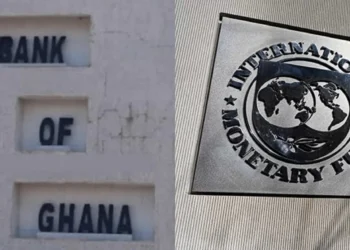The European Union’s (EU) recent carbon border adjustment mechanism (CBAM) is favourable to developed economies where production is relatively carbon efficient but will do little to mitigate climate change, UNCTAD has warned and indicated its reconsideration.
In a report, UNCTAD shows the potential implications of the CBAM on international trade, carbon dioxide (CO2) emissions, income and employment for EU and non-EU countries putting a spotlight on developing and vulnerable economies.
The CBAM is expected to introduce new CO2 emissions-cutting measures transitionally in 2023 and finalize them before 2026.
“Climate and environmental considerations are at the forefront of policy concerns, and trade cannot be the exception. CBAM is one of these options, but its impact on developing countries also needs to be considered,” UNCTAD Acting Secretary-General Isabelle Durant highlighted.
Furthermore, the report confirms that introducing the CBAM would reduce part of the carbon leakage produced by the different climate change ambitions between the EU and other countries.
By reducing carbon leakage, EU countries can relocate production to other countries with laxer emissions constraints for costs reasons related to climate policies, which could lead to an increase in their total emissions.
Moreover, the report highlights that several of the EU’s trading partners exporting goods in carbon-intensive sectors such as cement, steel, aluminium, oil refinery, paper, glass, chemical and fertilizers have raised concerns that the CBAM would substantially curtail their exports, but these changes may not be as drastic as some fear.
Effects of the CBAM on developing economies
Exports by developing countries across the targeted carbon-intensive sectors would be reduced by 1.4 per cent if the CBAM is implemented with a price of US$44 per tonne of embedded CO2 emissions, and by 2.4 per cent if it’s implemented with an US$88 per tonne price, the report indicates.
However, the effects would vary significantly by country depending on their export structure and carbon production intensity, the report notes.
In both scenarios, developed countries, as a group, wouldn’t suffer export declines since many tend to employ production methods that are less carbon intensive in the targeted sectors than many developing nations.
“The CBAM would generate a similar gap between developing and developed countries in terms of welfare. In both cases, developed countries would fare better than developing ones,” the report states.
With a CBAM based on a carbon price of US$44 per tonne, the income of developed countries would rise by US$2.5 billion, while that of developing nations would fall by $5.9 billion, according UNCTAD’s analysis.
Effects on the EU’s economy
However, developed countries would experience a higher welfare loss of US$51 billion from the initial introduction of a carbon price of US$44 per tonne, driven by losses in the EU, while developing countries would gain US$1 billion in the absence of the CBAM.
Moreover, increased carbon prices would markedly reduce carbon emissions in the EU, but the world’s largest trading bloc’s exports would decline, the report indicates.
A CBAM based on a carbon price of US$44 per tonne of CO2 embedded emissions would reduce the carbon leakage resulting from the implementation of climate policies in the EU by more than half, from 13.3 per cent to 5.2 per cent.
This notwithstanding, the mechanism wouldn’t fully compensate for the negative effects of the carbon tax on the EU’s economy.
Although the CBAM would be effective in reducing carbon leakage, its value in mitigating climate change is limited, the report indicates. This is because the mechanism would cut only 0.1 per cent of global CO2 emissions.
While this mechanism seeks to avoid carbon leakage of production and CO2 emissions to the EU’s trading partners, it is unclear as to how it can support decarbonization in developing countries.
“The EU could consider using some of the revenue generated by the CBAM to accelerate the diffusion and uptake of cleaner production technologies in developing countries,” Ms. Durant suggested. “This will be beneficial in terms of greening the economy and fostering a more inclusive trading system.”
READ ALSO: Banks’ credit to the Agriculture Sector declined by 35.41% year-on-year in April 2021




















